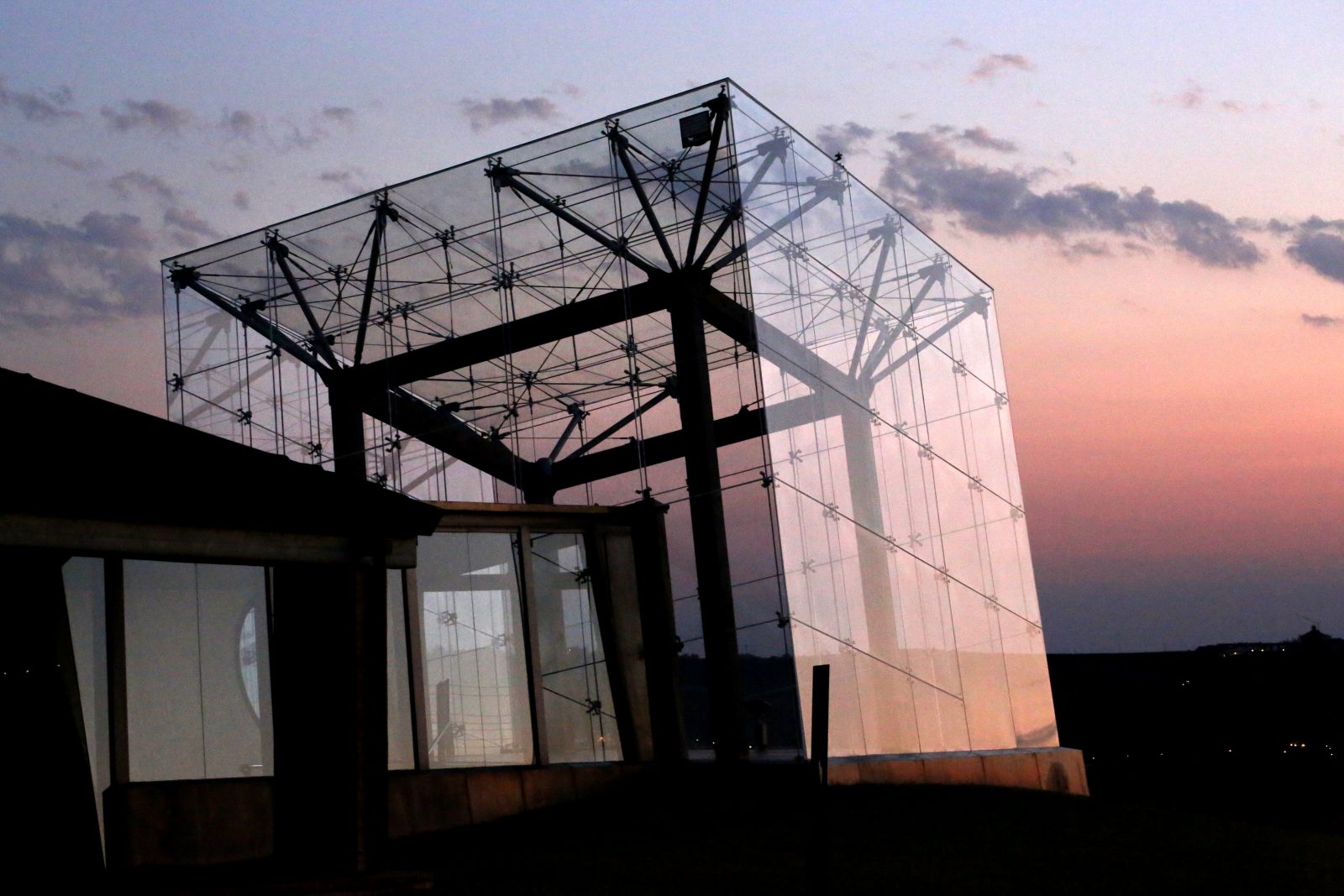10 April 2019
It’s a refreshing surprise to see modern architecture in the near-sacred vineyards of Barolo, where some of Italy’s most important wines are made.
In the past decade and a half, some small corners of the Langhe have undergone subtle transformations. Stately 19th-century farmhouses (and earlier) stand side-by-side with striking, modern buildings.
Italy holds its traditions and past as sacred; in point of fact, the country has the most UNESCO sites of any country in the world. Among these are the hills of Barolo in Piedmont, named a UNESCO World Heritage in 2014 as part of the Langhe, Roero and Monferrato Vineyard Landscapes because of their cultural importance, beauty, and as an outstanding example of man’s interaction with his natural environment. Perhaps it is for this reason that it’s such a refreshing surprise to see modern architecture right in the middle of these honoured vineyards.
In most cases, these wineries were not built as an act of rebellion, or even to shock local residents and visitors. Rather, they were built as a statement of innovation—and of integration, as many blend in with their surrounding environments. Ceretto Winery is just such an example. The family’s wineries blend clean modernism with nature in two of its four winery locations in Barolo. And they’re definitely worth a visit and wine tasting.
Modern winery designs: Grape and Cube
[gallery ids="7109,7110,7113"]
First is the Monsorda Bernardina, located about 5 km from the unofficial capital of the Langhe wine zone, Alba. The original winery is a 19th-century farmhouse that the family bought in 1987, but the real eye-catcher is its 2009 addition: a fantastic wine tasting room with space for educational and cultural activities called “The Grape.”
The Grape, or l’Acino in Italian, is a transparent semi-sphere made of ETFE (Ethylene tetrafluoroethylene), the same material that the 2008 Olympics Water Cube in Beijing is made of (which is also the world’s largest ETFE building, whereas The Grape is the world’s first small-scale ETFE building). Designed by architects Luca and Marina Deabate, it seems to hang suspended over Barolo vineyards like a grape on a vine.
The second winery is Bricco Rocche in Castiglione Falletto, located fifteen minutes away from The Grape and in the geographical heart of Barolo wine country. It produces only Barolo wine in its 1982-era winery. The winery and cellars were constructed after the Ceretto family purchased the surrounding vineyards in 1978.
The most striking aspect of this cantina is the 2000 edition of The Cube, or Il Cubo, designed by the Deabates and Polarglass of Turin. This transparent glass cube is frameless, allowing for a fantastic view of the countryside. It leans like the Tower of Pisa over the vineyards, bringing to mind a curious wine drinker admiring the vista, or a winemaker overseeing his vines. In 2016, The Cube was reconstructed, streamlining its look. The glass is non-reflective, giving the impression of a mirage—there and not there at the same time.
 The Cube
Interesting fact: the winery of Bricco Rocche is named after the only monopole vineyard of the Barolo DOCG appellation. A monopole vineyard is what an entire vineyard owned by one winery is called. In areas with particularly sought-after production zones and long family legacies, where dowries and landowner laws once divided properties, the ownership of single vineyards is often split multiple ways. Here, Ceretto makes three other cru wines in addition to Bricco Rocche Barolo DOCG: Prapò Serralunga, La Morra Brunate, and Cannubi San Lorenzo di Barolo
The Cube
Interesting fact: the winery of Bricco Rocche is named after the only monopole vineyard of the Barolo DOCG appellation. A monopole vineyard is what an entire vineyard owned by one winery is called. In areas with particularly sought-after production zones and long family legacies, where dowries and landowner laws once divided properties, the ownership of single vineyards is often split multiple ways. Here, Ceretto makes three other cru wines in addition to Bricco Rocche Barolo DOCG: Prapò Serralunga, La Morra Brunate, and Cannubi San Lorenzo di Barolo
“It’s a declaration of love and recognition for our land. Those who live here owe a lot to wine, particularly to Barolo,” says Roberta Ceretto, describing her family’s inspiration for creating such a unique work of architecture. “We wanted to celebrate Barolo with more than just a simple construction, with an artwork that we consider to be a monument. We wanted to maintain a link with the existing winery, too. It was a risk building such a modern building, but after sixteen years, we are happy to see how the Cube has become a point of reference for architecture enthusiasts and wine lovers, particularly of the Langhe. It has become an object for a kind of pilgrimage for the tourists that come to visit these hills.”
Wine, art, and poetry
[gallery columns="2" ids="7130,7133,7128,7127"]
The Cube and The Grape are sculptures that stand as testaments of the Cerettos’ love for their land. They’re works of art, often expressly admired by visitors. In fact, the Ceretto Winery has long tied itself to artistic expression.
For example, when they bought the Brunate vineyards in 1976, a small, unconsecrated chapel was included with the property. They asked English artist Sol LeWitt and American artist David Tremlett to decorate it, which they did in cheerful colours, creating a small sanctuary amid the vineyards. As another example, the interior of the Alba-based and Michelin-starred restaurant owned by Ceretto Winery, Piazza Duomo, is frescoed in fantastic designs by artist Francesco Clemente.
See these structural works of art when you visit Ceretto Winery on a custom Grand Wine Tour!
